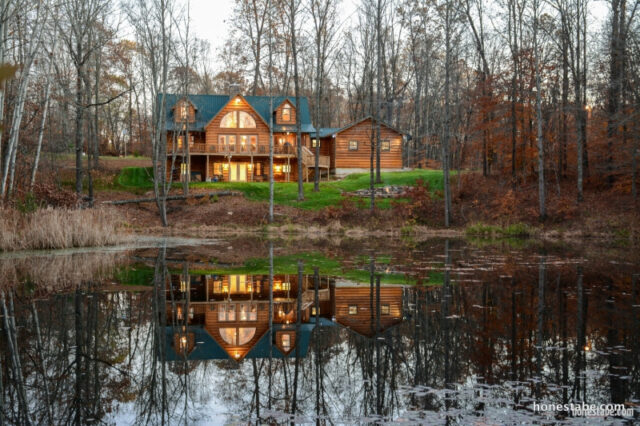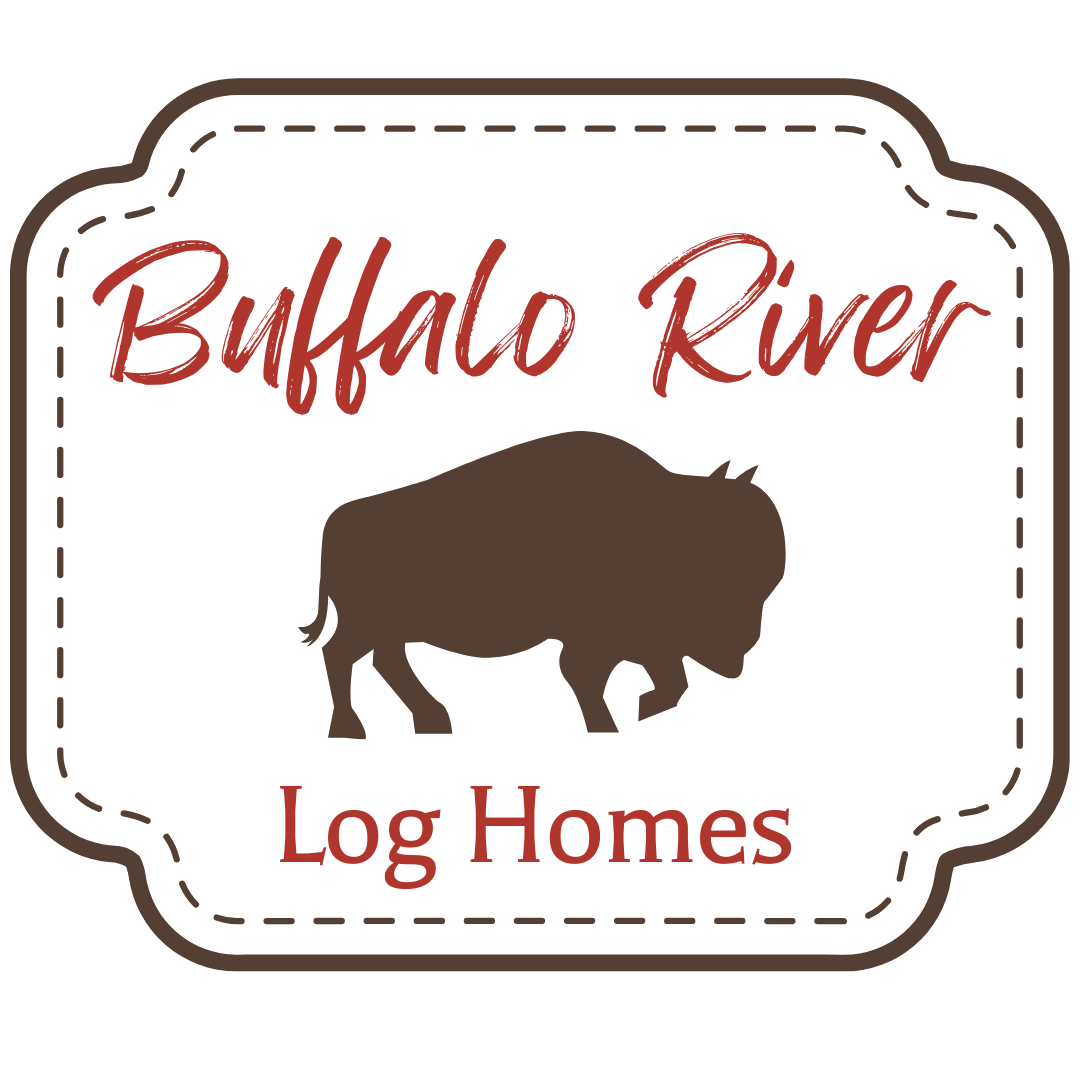 Building a log or timber frame home is a commitment to living in harmony with nature, and the land you choose plays a vital role in shaping your home’s design. Natural features like swales, wetlands, slopes, and wooded areas offer unique challenges, but they also present opportunities to create a home that blends beautifully with its environment. At Buffalo River Log Homes, we help you embrace these natural elements, ensuring your home works with the land rather than against it.
Building a log or timber frame home is a commitment to living in harmony with nature, and the land you choose plays a vital role in shaping your home’s design. Natural features like swales, wetlands, slopes, and wooded areas offer unique challenges, but they also present opportunities to create a home that blends beautifully with its environment. At Buffalo River Log Homes, we help you embrace these natural elements, ensuring your home works with the land rather than against it.
Additionally, incorporating sustainable practices like harnessing rainwater with barrels and other systems can make your home more eco-friendly and self-sufficient. Here’s how to design your dream home while respecting and enhancing the natural features of your property.
Designing Around Natural Features
Before the first beam of your log or timber frame home is raised, careful evaluation of the land is crucial. Identifying and understanding the property’s natural features can influence the placement of your home, its orientation, and even the design of outdoor spaces.
- Swales and Drainage: A swale, a shallow channel that naturally directs water flow, can be a benefit to your property. Instead of leveling it, work with it. Swales can be enhanced with vegetation to manage stormwater, prevent erosion, and direct water to gardens or ponds.
- Wetlands: Wetlands are ecologically valuable and often protected by regulations. Rather than seeing them as obstacles, consider them assets. Wetlands can enhance the beauty of your property, create opportunities for wildlife viewing, and act as natural water filtration systems. Thoughtful placement of your home can preserve these areas while enjoying their benefits.
- Slopes and Elevation: Sloping land offers a chance to design dramatic features, such as walk-out basements, terraced landscaping, or homes with elevated views. Proper grading and retaining walls can prevent erosion while creating usable outdoor spaces.
- Wooded Areas: Trees add beauty, shade, and privacy. Designing your home to preserve mature trees can create a harmonious look and reduce energy costs by providing natural cooling in the summer. Selective clearing can open up views while maintaining the integrity of the wooded environment.
Harnessing the Power of Rainwater
Rain is a resource that’s often overlooked, but in a log or timber frame home, it can become a valuable ally in sustainable living. Simple systems can capture rainwater for irrigation, cleaning, and even household use with proper filtration.
- Rain Barrels: Installing rain barrels at the base of downspouts is an easy and cost-effective way to collect rainwater. Use the water for tasks like watering gardens, washing vehicles, or cleaning outdoor areas.
- Rain Chains and Decorative Cisterns: Replace traditional downspouts with rain chains, which guide water in a visually appealing way into decorative cisterns. These can serve as both functional water storage and landscaping features.
- Rain Gardens: A rain garden is a planted depression designed to capture and filter rainwater runoff. Positioned near swales or low-lying areas, they reduce erosion, recharge groundwater, and provide habitat for pollinators.
- Larger Rainwater Harvesting Systems: For those seeking a more robust solution, larger cisterns or underground tanks can store thousands of gallons of water. With proper filtration, this water can supplement household use, reducing dependency on municipal water supplies.
Planning Outdoor Spaces
Natural features can enhance the design of outdoor living areas, making them more enjoyable and environmentally friendly.
- Decks and Patios: Position decks and patios to take advantage of views, natural breezes, or shade from nearby trees. Elevated decks work well on sloped properties, while ground-level patios can integrate seamlessly with wetlands or rain gardens.
- Pathways and Trails: Use natural contours of the land to guide pathways, reducing the need for extensive grading. Gravel or mulch paths are eco-friendly and blend well with a log or timber home aesthetic.
- Wildlife Habitats: Incorporate native plants and preserve natural areas to attract birds, butterflies, and other wildlife. A wetland or wooded area can become a tranquil retreat right outside your door.
Expert Guidance for a Harmonious Home
At Buffalo River Log Homes, we understand the importance of designing a home that respects the land. By working with Honest Abe Log Homes’ in-house drafting team and Buffalo River Log Homes owner Dixie McSpadden, we ensure your home complements the natural features of your property. From site evaluations to sustainable design ideas, our team brings expertise to every step of the process.
Building for the Future
Incorporating natural features and sustainable practices into your log or timber frame home design isn’t just good for the environment—it’s good for you. These elements enhance the beauty and functionality of your property, reduce maintenance needs, and create a lasting connection to the land.
Ready to create a home that works with nature? Contact Buffalo River Log Homes today to start your journey. Together, we’ll design a home that reflects your values and respects the natural beauty of your property.
